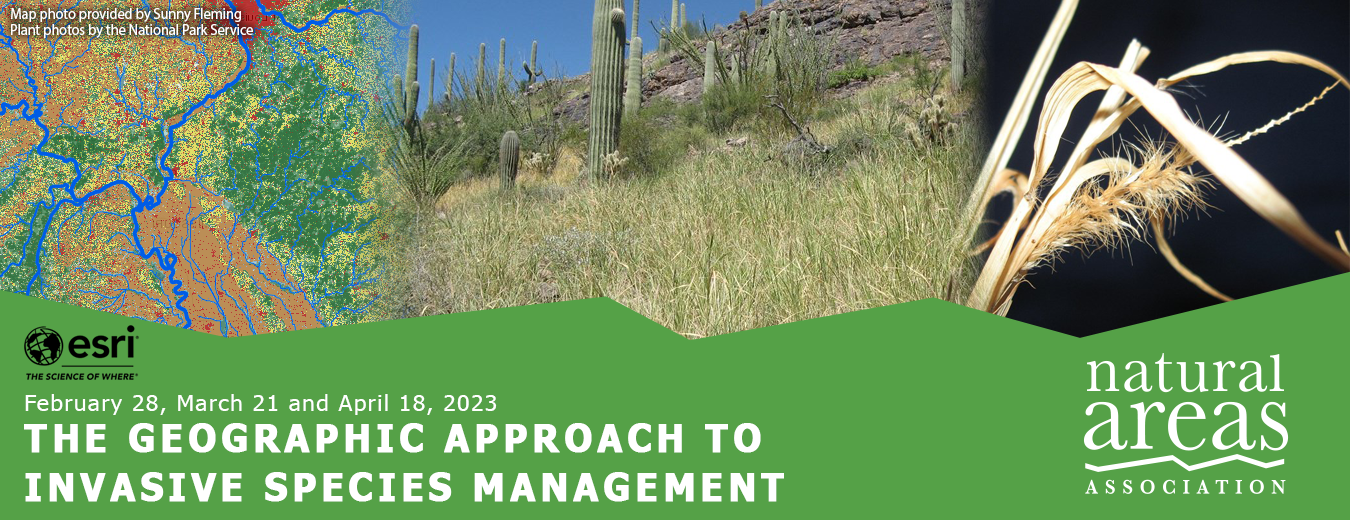
Thanks to generous support from Esri, NAA can provide this opportunity at no cost to you!
Have questions? Email us at info@naturalareas.org.

Join NAA and Esri for an innovative three-part webinar/workshop highlighting the use of geographic information system (GIS) tools.
During this series, Esri public sector environment leads and ArcGIS product managers will focus on how GIS tools can be a critical component of an invasive species management plan. Using buffelgrass (Cenchrus ciliaris) as a case study, Esri's product experts will demonstrate how ArcGIS Field Maps and ArcGIS Hub permits land managers to increase efficiency, improve efficacy, reduce waste, and expand communications when gathering and analyzing data. These sessions are practice-based and practical! Structured to examine automating workflows, each session will have ample time for participants to ask detailed questions and engage with product experts.
Choose to attend one session or all three, but definitely take advantage of this opportunity to talk directly with ArcGIS Field Maps and ArcGIS Hub product managers about challenges on your site, next level uses, or even just how to think about getting started!
Whether you are currently using GIS tools or you just want to learn more about how they can be integrated into your projects, this series is for you!
Support the people who manage our natural areas and protect biodiversity in perpetuity.